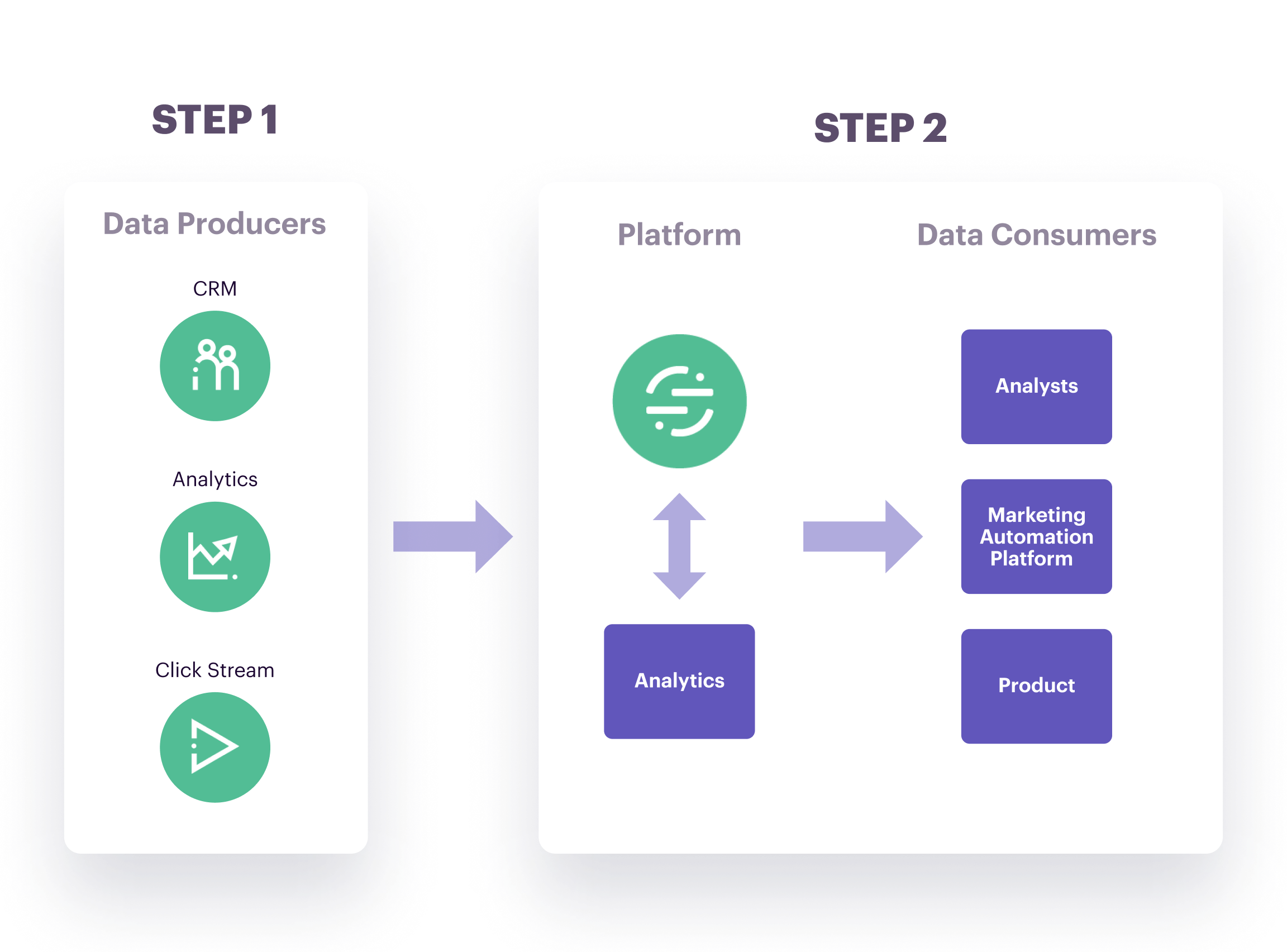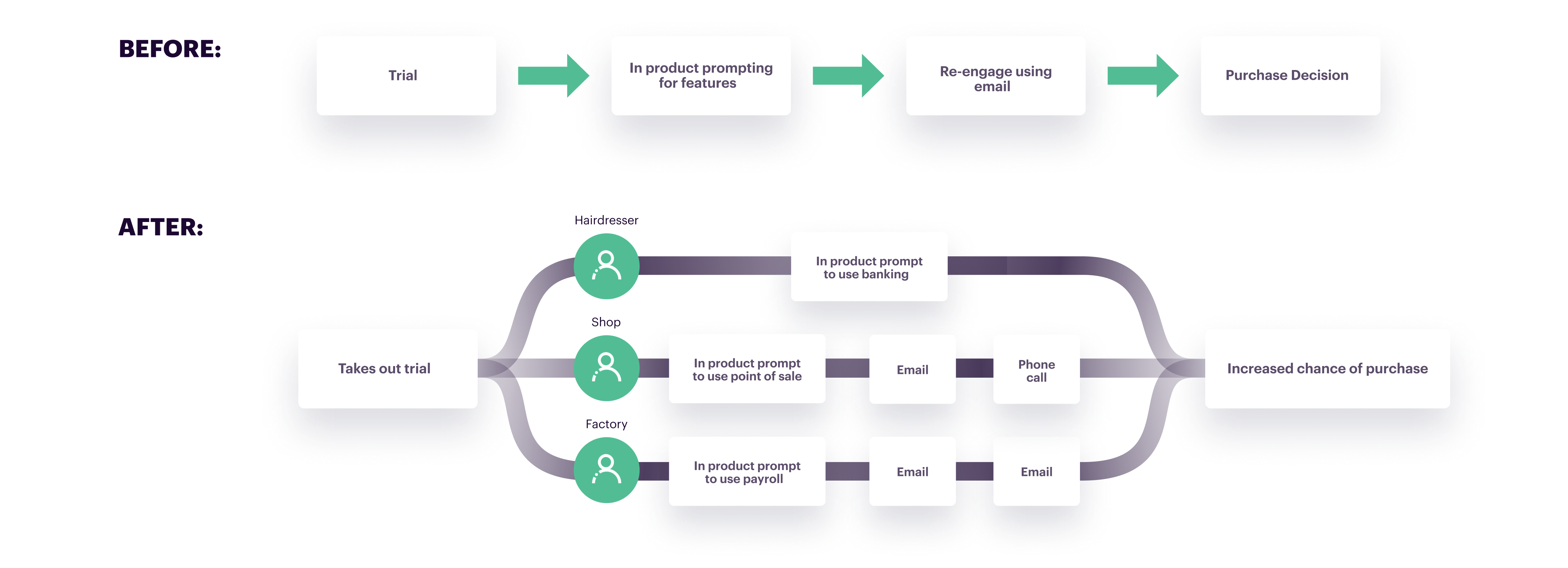Time to read: 3 minutes
Results
54%
increase in trial conversion rate
The big win
The 25 year-old company’s digital strategy wasn’t scaling. MYOB had long been a data-driven company, but with each team implementing their own stack, synthesising insights and delivering personalised experiences was either arduous or impossible. MYOB lacked consistency for tracking customer data.
MYOB built a best-in-class data strategy by centralizing customer data, teams and processes with Twilio Segment at the core. MYOB went from having the same trial experience for all products and customers to being able to customize the trial experience by product and user segment. By creating customer experiences that represented the unique needs of its customers, MYOB improved trial conversion rates, a critical business metric.
MYOB is an Australian-based software enterprise that provides a wide range of business management solutions—including accounting and payroll, retail point of sale, and professional tax solutions—to help companies of all shapes and sizes focus on their goals rather than their books. Its comprehensive online platform offers features such as automatic expense categorization, inventory tracking, credit card payments, detailed job tracking, and more.
The company struggled to scale its B2B digital strategies due to disparate data sources and teams. To solve this, they needed a unified data strategy to transform their digital customer experiences. Head of Product & Platforms at MYOB, Jay Nawaz, implemented a centralized data infrastructure using Twilio Segment and AWS and made organizational changes that improved their time to market, personalized user journeys, and improved commercial results.
Scaling a digital strategy without the ability to unify data
As a rapidly growing software company supporting 1.2 million small-to-medium-sized enterprises, MYOB had acquired a trove of rich user insights by employing multiple analytics tools. But MYOB’s digital strategy wasn’t scaling. The company lacked a consistent model for tracking, unifying, and activating customer data. Not only did this limit its customer insights, it also severely limited its ability to personalize customer interactions.
The most important aspect of our customer journey is the first 30 days when they are trialling our product, and we were providing exactly the same experience to everyone. We had so many different products and each product had a different team, different databases, different backlogs, and it was taking us 6 months + to get a simple email change out to market.” -Jay Nawaz, MYOB
When MYOB combined data from multiple sources, it was a long, laborious process that required tons of engineering support. For example, the organization had recently rolled out Salesforce Marketing Cloud, but soon discovered that it lacked the functionality to segment customers based on certain user data such as which features they’d used recently. This created —a major roadblock for the marketing team, which was looking to increase retention through targeted nurture campaigns.
As a result, the data and engineering teams resorted to handling the data outside of Salesforce Marketing Cloud to identify the relevant users, then importing that information manually. This meant that the marketing team was severely limited in its ability to target customers based on their actions and to send tailored communications within a relevant timeframe.
Enabling best-in-class strategy with Twilio Segment at the core
MYOB built a best-in-class data strategy by centralizing its customer data, teams, and processes. Their first step was to seamlessly connect data sources and help teams better understand their customers—all using Twilio Segment.
Its second step was to make internal improvements to accelerate time to market and drive efficiencies. MYOB went through an exercise to clearly delineate “Data Producers” from “Data Consumers.” It created teams with marketers, developers, a product manager, and analysts to work together to improve specific KPIs. This structure led to faster turn-around times and stronger ownership and accountability.

Finally, after implementing Twilio Segment and organizational changes, MYOB was able to scale its digital experiences. MYOB went from having the same trial experience for all products and customers to being able to customize the trial experience by product and user segment.

By creating customer experiences that represented the unique needs of its customers, MYOB improved trial conversion rates, a critical business metric.
Driving toward improved conversion rates and increase personalization
MYOB created a holistic and unified data strategy that enabled it to personalize its user experiences and improve trial conversion rates by 54%. By establishing Twilio Segment as the definitive source for user data, MYOB standardized its data and became a more data-driven organization. Organizationally, MYOB established reusable patterns and more ownership for cross-functional teams. MYOB is now a more efficient and agile organization that has the infrastructure in place to continue scaling.
To learn more about how MYOB unified its data and improved KPI’s, watch Jay’s full CDP Week video.
Interested in hearing more about how Segment can help you?
Connect with the team to learn how 25,000+ companies use Segment's extensible, scalable platform to turn customer data into revenue-generating experiences.
Thank you, you’re all set!
We'll get back to you shortly. For now, you can create your workspace by clicking below.